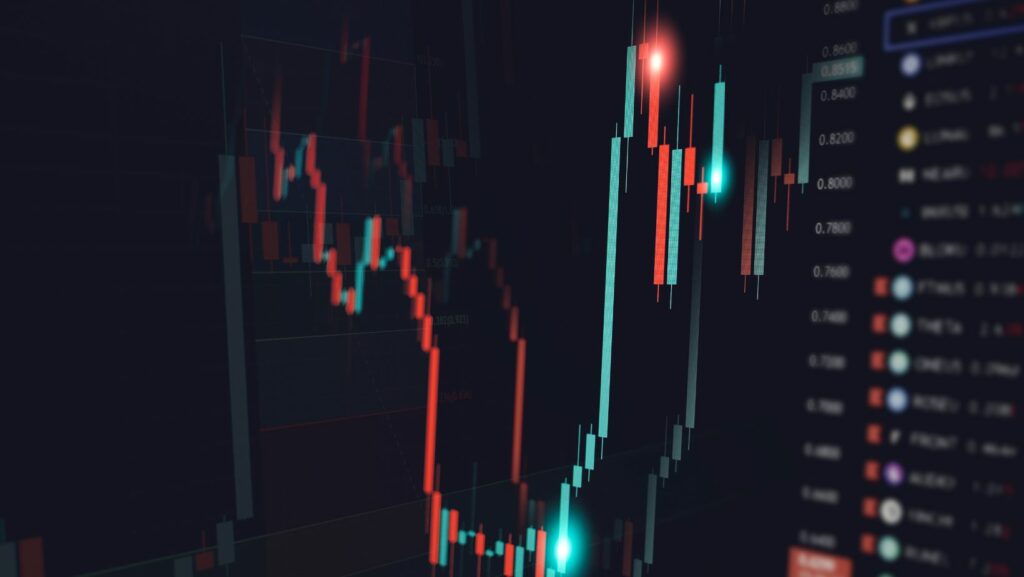Choosing the right trading journal software can make the difference between random results and consistent growth.
With the right platform, you can identify profitable patterns, fix recurring mistakes, and build a disciplined review habit.
But with dozens of choices, the real challenge isn’t just finding a journal; it’s finding one that is a good fit for your personal trading style.
1. Tradervue: Best for Data Accuracy and Proven Reliability
Tradervue is one of the oldest trade trackers and performance analysis platforms.
It connects to most brokers for automatic import, provides accurate trade data, and has reports that will tell you what is driving results.
The software is described as minimalist and utilitarian, and although its interface is utilitarian, rather than gaudy, it has since become the standard for professional trade journaling.
Strengths
- Trusted data integrity and reporting accuracy
- Automatic trade imports for stocks, options, and futures
- Deep analytics and detailed profit/loss metrics
- Long-term stability and professional-grade tools
Weaknesses
- Interface feels dated compared to modern apps
- Advanced reporting requires a paid plan
- Update cadence is slower than newer competitors
Best for: Traders who prioritize accuracy, reliability, and long-term consistency.
2. RizeTrade: Best for Day Traders Who Need Real-Time Feedback
RizeTrade is a day trader’s journal designed for speed, structure, and clarity.
The trading journal separates trading by pre-market, open, midday, and close so you can quickly see when you are the most productive.
It’s simple, fast, and designed to help monitor actionable data instead of vanity metrics.
The free plan is powerful enough for daily traders.
Strengths
- Session-based review built for day traders
- Clean interface and fast journaling process
- Real-time feedback and session-level analytics
- Free plan with core tools available
Weaknesses
- Limited broker integrations
- Still expanding its analytics library
Best for: Intraday traders who want to understand their performance by time of day and strategy type.
3. TraderSync: Best for Visual Learning and Trade Replay
The application also has a suite of trade reports, tagging, and a market replay mode that lets traders visualize their own trades on a chart.
This feature has particular appeal to visual learners who review their executions and setup contexts.
Despite its depth, TraderSync is relatively expensive compared to its competitors.

Its AI feedback feature is still in its infancy, and some reviews indicate it identifies patterns but fails to indicate how to act on them.
Strengths
- Market replay feature for post-trade visualization
- Automatic imports and tagging
- Deep analytical reporting
Weaknesses
- More expensive than competitors
- AI feedback lacks precision and practical value
- Learning curve for new users
Best for: Traders who learn best visually and don’t mind paying for replay functionality.
4. Edgewonk: Best for Psychology and Behavioral Improvement
Edgewonk also includes trade analytics with trading psychology.
This means you can log your trading emotions, discipline score, and confidence index as part of monitoring your performance and studying how this influences your execution and consistency.
Not as glossy as online trading journals, its focus on self-awareness and concentration sets it apart.
Strengths
- Tracks mindset, discipline, and confidence with each trade
- Focused on process, not just results
- One-time purchase with lifetime access
Weaknesses
- Outdated interface
- No cloud or mobile version
- Requires manual data entry
Best for: Traders who want to improve discipline, emotional control, and decision quality.
5. TradeZella: Best Interface and Playbook Design
TradeZella’s interface is nicely designed and has one of the better layouts on the market.
The playbook feature gives you a handy way to document setups, mistakes, and performance patterns.
However, many users have also reported issues such as bugs, loading delays, slow customer support, and new features that introduce more bugs than improvements.
Strengths
- Beautiful, intuitive dashboards
- Playbook-style journaling for structured learning
- Behavioral and habit tracking features
Weaknesses
- Reports of app instability and data lag
- Too many new features were added before bug fixes
- No free plan available
Best for: Traders who value design and workflow structure but can tolerate minor technical issues.
6. TradesViz: Best for Custom Data and Advanced Analysis
TradesViz provides the most control, flexibility, and personalization possible, with over 600+ metrics available, multiple dashboards, and a wide array of charts, tables, and other displays using AI queries to see your performance.
Powerful as it is, there are many features that new users will find confusing, and it takes a long time to set up.
For analytical traders, however, it is indispensable.
Strengths
- Deep customization across hundreds of metrics
- AI-assisted performance queries
- Multi-broker integration and cloud access
Weaknesses
- Steep learning curve
- Requires configuration and setup effort
Best for: Experienced traders and analysts who want to dissect their data in depth.
7. Trademetria: Best for Budget-Conscious Traders
Trademetria is one of the most functional free plans on this list and has good analytics, multiple account trackers, and is an option for a new trader who does not want to pay for a trading journal.
Despite its minimalist user interface and accurate reporting, it continues to add new reporting capabilities in successive upgrades.
Strengths
- Free plan with essential analytics
- Clean and beginner-friendly design
- Works across brokers and markets
Weaknesses
- Limited advanced features
- Lacks the depth of paid competitors
Best for: New or part-time traders who want a cost-effective way to track trades.
Key Features That Matter Most in Trading Journal Software
Choosing the right software isn’t just about the logo or design.
The best trading journals share several essential traits that make them worth your time:
1. Accurate Data Imports – Automatic syncing prevents manual entry errors.
2. Custom Tags and Notes – Flexibility to label trades by setup, strategy, or mistake type.
3. Performance Analytics – Metrics like win rate, profit factor, and time-based breakdowns.
4. Behavioral Tracking – Ability to log mindset, emotions, or discipline for each trade.
5. Visualization Tools – Equity curves, heat maps, and trade charts that make data intuitive.
6. Speed and Stability – A lag-free interface that supports consistent journaling.
7. Free or Affordable Plans – Accessible pricing without sacrificing quality.
Simplified Comparison
Tradervue
- Best for: Reliable analytics
- Strength: Professional accuracy and proven reliability
- Weakness: Slower updates; limited free features
RizeTrade
- Best for: Day trading
- Strength: Real-time, session-based feedback
- Weakness: Fewer broker integrations
TraderSync
- Best for: Replay analysis
- Strength: Visual trade reviews
- Weakness: Expensive; AI not well implemented
Edgewonk
- Best for: Psychology and mindset
- Strength: Behavioral and emotional tracking
- Weakness: Manual desktop interface
TradeZella
- Best for: Interface design
- Strength: Visual playbook system
- Weakness: Performance and bug issues
TradesViz
- Best for: Advanced analytics
- Strength: Deep customization
- Weakness: Complex setup process
Trademetria
- Best for: Budget-friendly journaling
- Strength: Free plan and solid analytics
- Weakness: Limited advanced tools
Final Thoughts
Trading journaling software allows traders to analyze their results in regular and consistent ways, identify strengths and weaknesses, eliminate any bad habits that are costly, and develop a structured review process.
In terms of reliability and accuracy, Tradervue is considered the gold standard.
For day traders looking for organization and fast turnaround, RizeTrade is the best choice.
Alternatives to TradingDiary Pro include Edgewonk and TradeZella (which also include behavioral components), and TradesViz and Trademetria (which vary in complexity and price).
Whatever you do, be consistent.
Log your workouts, review what you did each week, and let your data tell you what you need to work on next.
